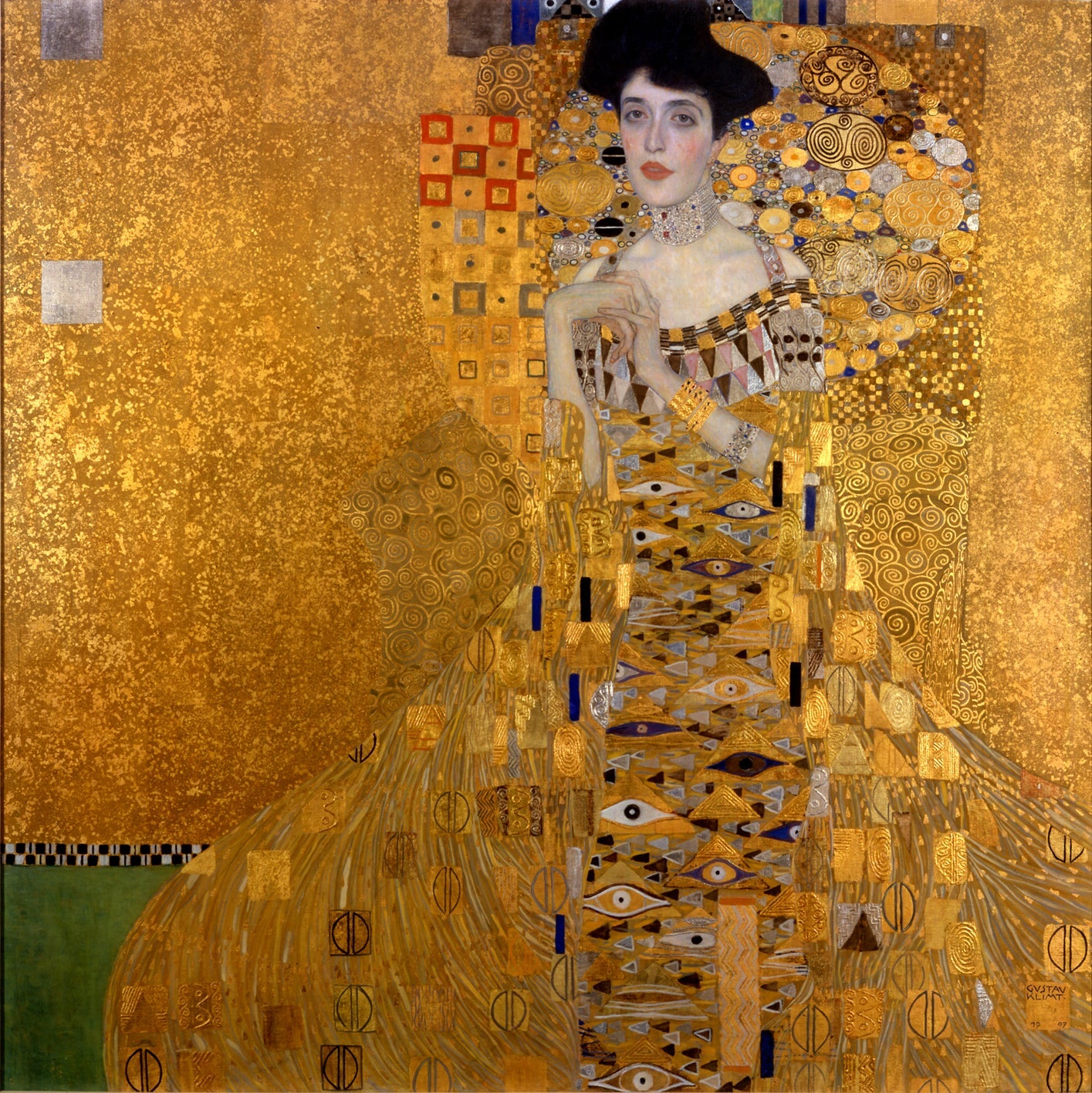Few paintings embody luxury and mystery as much as Gustav Klimt’s Portrait of Adele Bloch-Bauer I. Completed in 1907 during Klimt’s celebrated “Golden Period,” this shimmering masterpiece has become one of the most famous portraits in art history. Known as “The Lady in Gold”, the painting is both a symbol of artistic brilliance and a story of resilience, intrigue, and cultural heritage.
Today, it continues to inspire collectors and art lovers around the world. Owning a hand-painted reproduction of Klimt’s Adele Bloch-Bauer allows you to bring that golden elegance into your own home.
In this article, we’ll uncover the story behind the portrait, its symbolism and style, the fascinating journey of the painting itself, and how to own a museum-quality reproduction.
The Story of Adele Bloch-Bauer
Who Was Adele?
Adele Bloch-Bauer was a wealthy Viennese socialite and patron of the arts. Married to sugar magnate Ferdinand Bloch-Bauer, she moved within elite cultural circles of early 20th-century Vienna. Known for her beauty, intelligence, and charisma, Adele became Klimt’s only named model, sitting for him twice.
The Commission
Ferdinand commissioned Klimt to paint his wife Adele as a statement of love and prestige. The project took more than three years to complete, as Klimt meticulously layered gold leaf and intricate patterns.
When finally unveiled in 1907, the portrait was hailed as a masterpiece of the Vienna Secession movement, blending modernism with Byzantine-inspired ornamentation.
The Symbolism of Portrait of Adele Bloch-Bauer I
Klimt’s portrait is far more than a likeness—it is a symbolic tapestry of femininity, luxury, and transcendence.
-
Gold Leaf: Inspired by Byzantine mosaics, the use of gold suggests eternity, divinity, and opulence.
-
Geometric Motifs: Adele is surrounded by intricate spirals, eyes, and rectangles, symbolizing sensuality and mystery.
-
Feminine Power: Unlike traditional portraits, Adele almost dissolves into her surroundings, suggesting a merging of body and spirit.
-
Ornamental Robe: Her gown is a cascade of golden triangles and ovals, emphasizing her elegance and status.
This interplay of realism and abstraction made Klimt’s portrait a radical departure from conventional portraiture.
Why It’s Called The Lady in Gold
After World War II, the painting became known internationally as The Lady in Gold—a title that distanced it from its Jewish sitter, Adele Bloch-Bauer, due to the anti-Semitic climate of the time. Today, however, it has been rightfully restored to Adele’s name, recognizing both her identity and the cultural context of the painting.
The Journey of the Painting
The story of Klimt’s Portrait of Adele Bloch-Bauer I is as dramatic as the artwork itself.
Nazi Looting
During World War II, the Nazis seized the Bloch-Bauer family’s possessions, including Klimt’s masterpiece. For decades, it remained in Austria, displayed at the Belvedere Museum.
The Legal Battle
Maria Altmann, Adele’s niece, fought a long legal battle to reclaim the portrait. Her story inspired the 2015 film Woman in Gold, starring Helen Mirren.
In 2006, the U.S. Supreme Court ruled in Altmann’s favor, and the painting was returned to her family.
Record-Breaking Sale
Later that year, the painting was sold to Ronald Lauder for the Neue Galerie in New York for $135 million, making it one of the most expensive paintings ever sold at the time.
Today, it remains on public display at the Neue Galerie, where it attracts thousands of visitors each year.
Klimt’s Golden Period
The Portrait of Adele Bloch-Bauer I is one of the crown jewels of Klimt’s Golden Period, which also produced The Kiss(1907–1908). During this time, Klimt fused fine art with decorative elements, often incorporating precious materials like gold and silver leaf.
This approach reflected both the opulence of Vienna’s cultural elite and Klimt’s fascination with spirituality, sensuality, and ornament.
Why Collect Reproductions of Klimt’s Adele Bloch-Bauer
Museum-Level Prestige
Owning a reproduction of The Lady in Gold allows collectors to enjoy one of the world’s most luxurious portraits without the astronomical price tag.
Hand-Painted vs Prints
-
Prints: Flat, lifeless imitations that lose Klimt’s texture.
-
Hand-Painted Reproductions: Capture the glow of gold tones and intricate brushwork, giving the piece life.
Interior Styling Ideas
-
Living Room Statement: A focal point of luxury and elegance.
-
Bedroom Décor: Symbolic of femininity and romance.
-
Office or Gallery Space: A conversation piece that reflects sophistication.
Why The Lady in Gold Remains Popular
-
Cultural Legacy: The painting is tied to one of the most famous restitution cases in history.
-
Artistic Brilliance: Its combination of realism, symbolism, and ornament makes it unique.
-
Universal Symbolism: Wealth, beauty, resilience, and timeless elegance.
Why Choose Blue Surf Art?
At Blue Surf Art, we specialize in museum-quality Klimt reproductions, including The Kiss and Portrait of Adele Bloch-Bauer I. Our artists carefully study Klimt’s techniques, using oil paints on premium canvas to recreate his golden brilliance.
We provide:
-
Custom sizing to fit any space
-
Rolled or stretched canvas options
-
Worldwide shipping, professionally packaged
Each painting is hand-painted with precision, honoring Klimt’s original textures and symbolism.
FAQs About Klimt’s Portrait of Adele Bloch-Bauer I
Q: Who was Adele Bloch-Bauer?
A: A Viennese socialite, patron of the arts, and Klimt’s only named sitter.
Q: Why is the painting called The Lady in Gold?
A: During WWII and post-war Austria, the name was used to avoid referencing its Jewish subject.
Q: Where can I see it today?
A: It is housed at the Neue Galerie in New York.
Q: Are Klimt reproductions legal?
A: Yes. Klimt’s works are public domain, making hand-painted reproductions legal and widely available.
Final Thoughts
Gustav Klimt’s Portrait of Adele Bloch-Bauer I is more than just a portrait—it is a story of beauty, resilience, and golden brilliance that continues to fascinate the world. Owning a reproduction means bringing not only Klimt’s artistry but also a piece of history into your home.
✨ Explore our Klimt's Portrait of Adele Bloch-Bauer I Reproductions and add the elegance of The Lady in Gold to your walls.

Share:
Pop Art Icons: Warhol, Lichtenstein & the Rise of Modern Culture
What Is Impressionism? History, Artists & Reproduction Guide